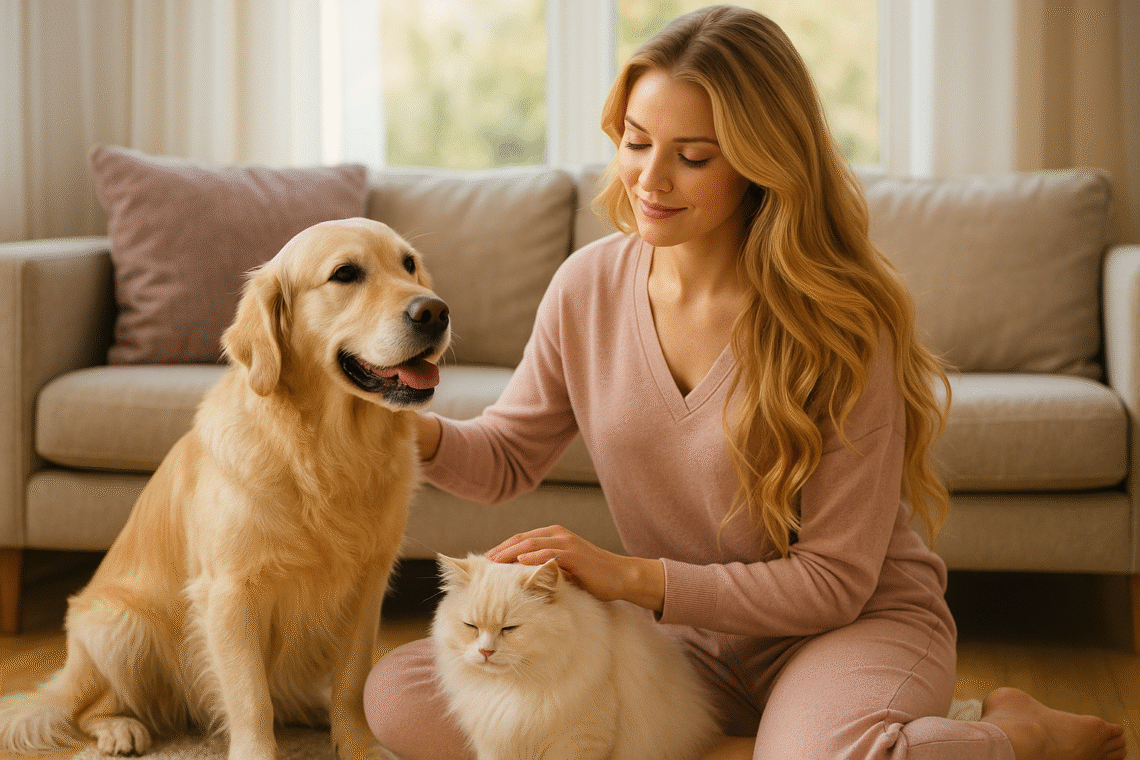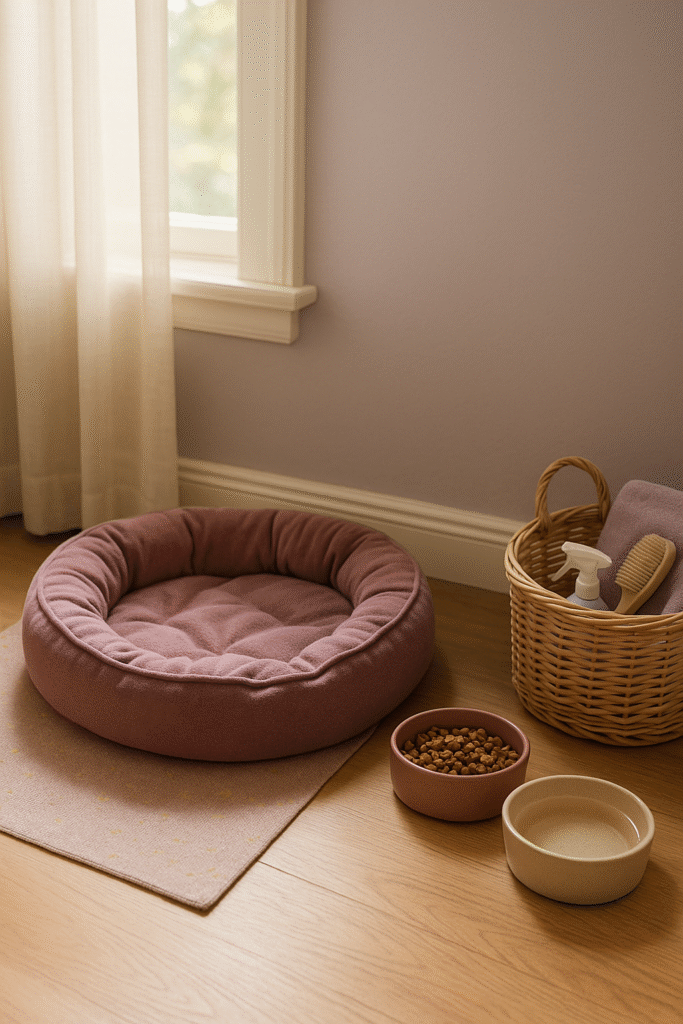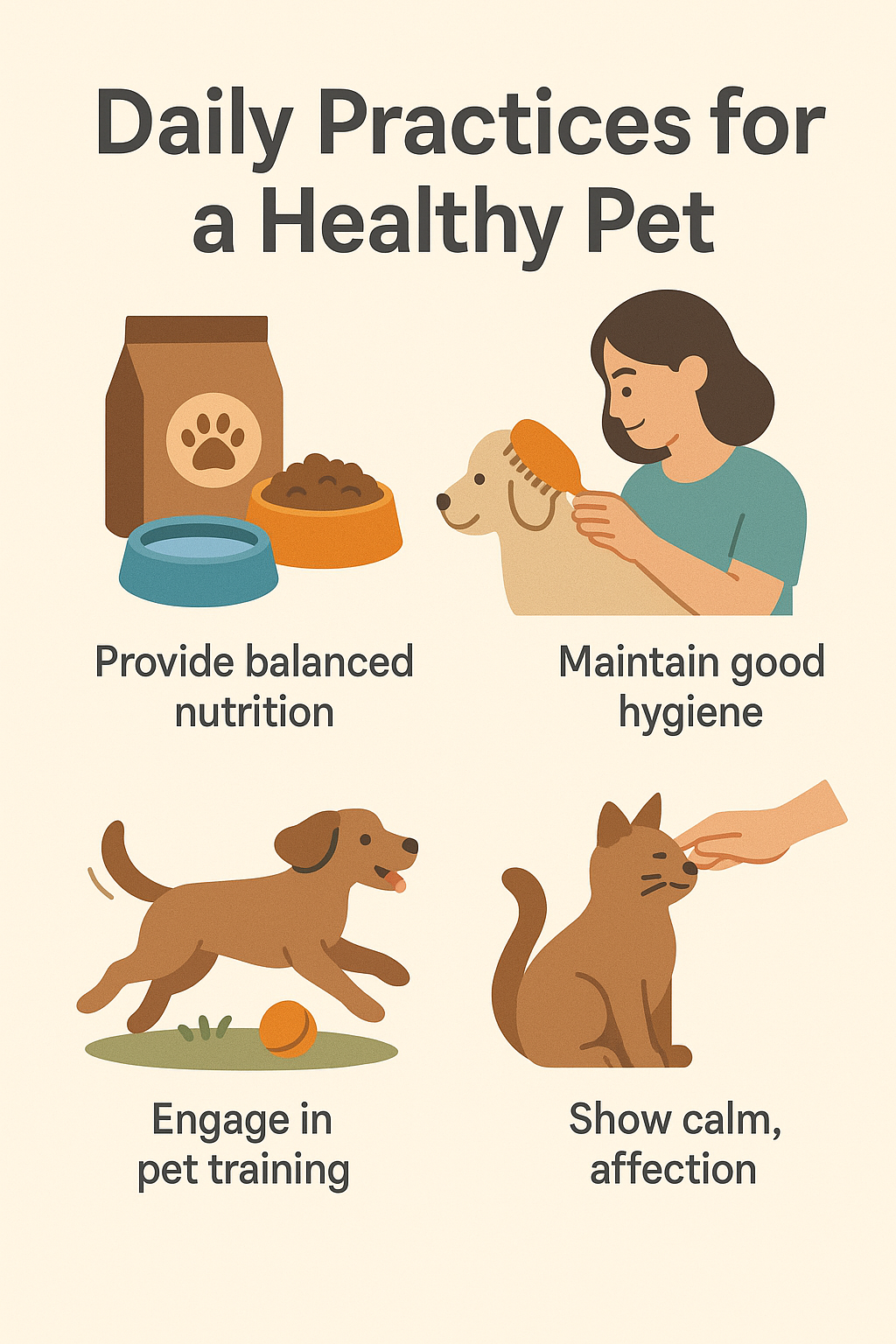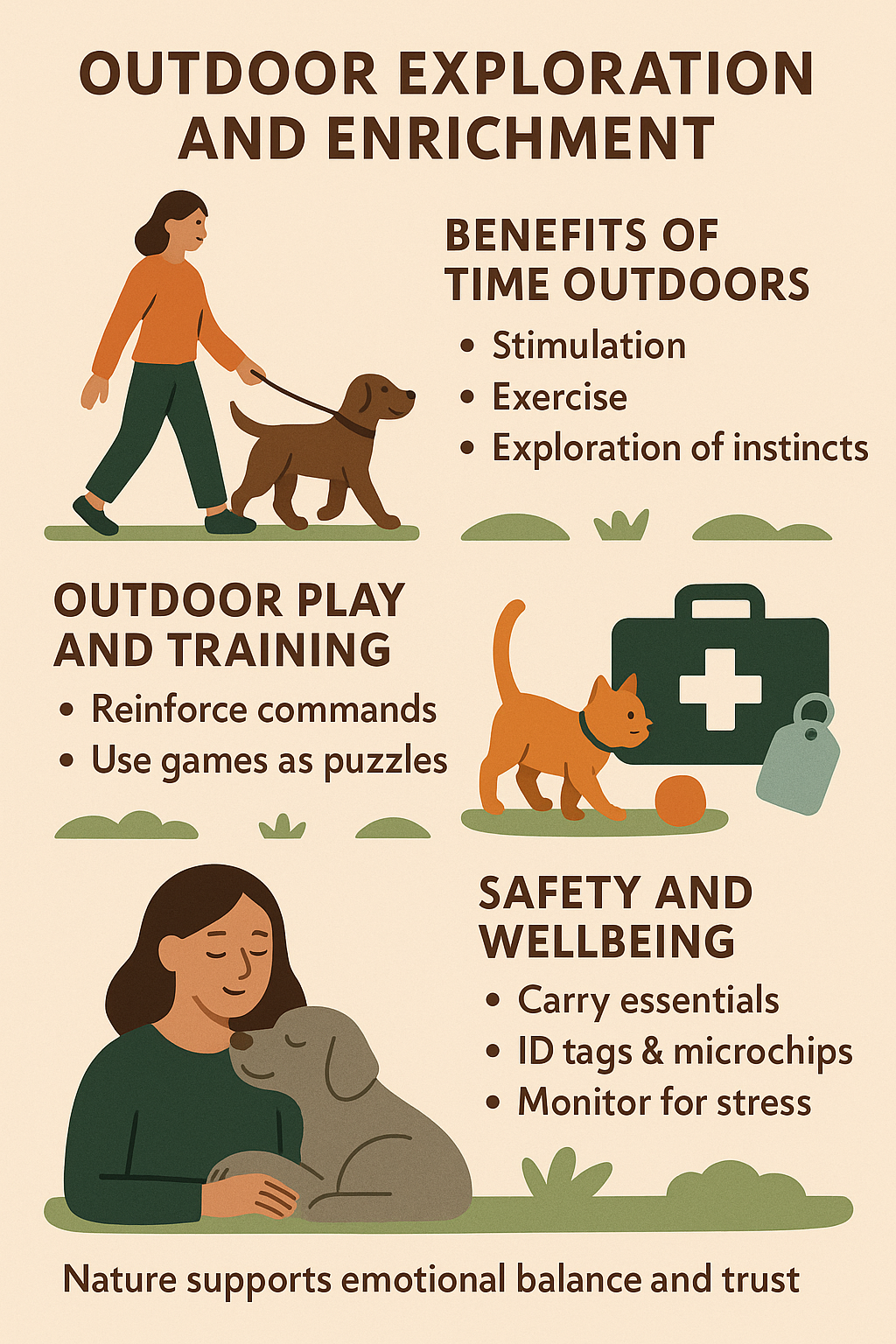
Nurturing Whiskers – The Serene Art of Basic Pet Care
Why Basic Pet Care Matters
Caring for a pet involves more than food and walks — it’s about cultivating a nurturing pets environment that supports a pet’s wellbeing and happiness. Whether you share your space with a playful puppy, a serene senior cat or something in between, understanding the foundations of pet care is essential for building a trusting, healthy bond.
At its core, pet care starts with attention to daily needs. Clean, accessible water and a balanced diet tailored to species, age and health are fundamental. It’s important to research your pet’s dietary requirements rather than relying on commercial branding alone. Each pet is unique and their needs may shift as they grow or face health changes.
Comfort is another cornerstone. This means providing a clean, cosy space where your pet feels safe — a designated sleeping area, routine grooming and regular checks for signs of discomfort or illness. These practices are more than hygiene; they are expressions of love and respect that reinforce your role as a caring guardian.
Mental stimulation is also a crucial part of pet care. Pets benefit from varied activities such as interactive play, training games or even time spent quietly observing the world together. This mental engagement not only wards off boredom and behavioural issues but also strengthens your emotional connection.
Routine veterinary check-ups are essential, even when your pet seems healthy. Preventative care like vaccinations, parasite control and dental checks help maintain long-term health. Trusting a good vet and knowing when to seek help are skills worth developing as part of responsible pet ownership.
Basic pet care extends beyond the physical. A pet’s emotional health is equally vital. Pay attention to how your pet responds to changes in their environment, people or routines. They may not communicate in words, but their behaviour speaks volumes. Gentle reassurance, patience and consistency help pets feel secure and valued.
This foundation of care supports every other aspect of a pet’s life — from pet training to social behaviour. It’s the first step in guiding your pet to be a confident, loving companion.
With so many resources available, it can feel overwhelming. But starting with simple, consistent actions builds a lifestyle where both you and your pet thrive. By embracing this approach, you honour your pet’s trust and create harmony at home — a principle truly in tune with the values of Janie’s Balanced Path.
Next, let’s explore what essential tools and spaces support a healthy pet routine.
Creating a Comforting Home Environment
A well-structured home environment is one of the most powerful tools in care. It sets the tone for a pet’s sense of security, comfort and behavioural stability. Designing a dedicated space within your home, tailored to your pet’s needs, is not just practical — it’s a meaningful way to show care.
Begin with a designated area that serves as your pet’s personal retreat. This could be a quiet corner with a soft bed, favourite toy and easy access to food and water. Position it away from foot traffic and noise to help your pet feel safe and undisturbed. For dogs, crates can offer a secure den-like atmosphere, while cats often prefer elevated spots where they can observe their surroundings peacefully.
Hygiene is another essential element. Regularly cleaning bowls, bedding and litter areas prevents illness and keeps your home feeling fresh. Use pet-friendly cleaning products that avoid harsh chemicals. This supports both a healthy pet and a toxin-free environment.
Introduce subtle cues that encourage calm, such as soothing colours like lavender and blush tones in pet accessories or soft lighting in their space. While animals perceive colour differently than humans, the ambience you create influences your behaviour, which in turn shapes theirs. A tranquil setting encourages a more relaxed and cooperative pet, particularly during training moments.
Organisation matters too. Store grooming tools, treats and basic health supplies together for easy access. A small basket or shelf dedicated to pet care essentials keeps routines efficient and stress-free. When everything has its place, consistency in your pet’s routine becomes second nature.
Consider the sensory experience. Pets are highly responsive to sound and scent. Gentle music or nature sounds can ease anxiety during quiet times. Avoid overwhelming them with strong fragrances or synthetic air fresheners that could irritate their sensitive noses.
Incorporating small rituals, like a gentle brush before bed or morning cuddles by the window, strengthens your bond. These daily moments reassure your pet that they are loved and secure, reinforcing positive behaviours and emotional wellness.
By thoughtfully crafting a home that meets your pet’s needs, you build trust and harmony. These foundations support their physical health, emotional balance and readiness for learning — aligning beautifully with the principles of Janie’s Balanced Path.
Now, let’s look at the daily tools and practices that help maintain a healthy pet routine.


Daily Practices for a Healthy Pet
Maintaining your pet’s health doesn’t have to be complex. With a few mindful daily practices, you can support their vitality and happiness. These small routines build a strong foundation of care, reinforcing both physical health and emotional stability.
Start with nutrition. Feed your pet at consistent times using food tailored to their needs. Whether it’s breed-specific kibble, fresh meals or vet-recommended options, consistency in feeding promotes digestion and reduces anxiety. Monitor portion sizes to prevent overfeeding, which can lead to long-term health issues. Don’t forget fresh water — it should be clean and readily available throughout the day.
Hygiene routines are equally important. Brushing your pet’s fur daily (or as recommended for their breed) prevents matting, removes debris and strengthens your bond. Regular dental care, such as brushing teeth or using pet-safe dental treats, can prevent gum disease and support overall wellbeing.
Physical exercise helps pets stay healthy and avoid behavioural problems. Depending on your pet’s species and age, this could mean morning walks, playtime in the garden or structured indoor games. Look for signs of fatigue or overexertion, adjusting activities as needed.
Pet training can also be a form of daily engagement. Even basic commands like sit, stay or come create a sense of structure and mutual respect. Keep sessions short and positive — use praise and occasional treats to reinforce success. Training also provides valuable mental stimulation, keeping your pet sharp and engaged.
Health checks can be quick and simple. Observe your pet daily for signs of changes in appetite, energy levels, movement or mood. Check ears, eyes, skin and paws during grooming. These moments help you detect issues early and seek timely advice from your vet.
Include time for calm and affection. Stroking, cuddling or simply sitting together nurtures trust. Healthy pets are emotionally attuned to your energy, so peaceful shared moments benefit both of you. It’s also a perfect opportunity to practice mindfulness, aligning beautifully with the ethos of Janie.
Store essential items like brushes, wipes, supplements and medications in an organised spot for easy daily access. This keeps routines efficient and helps you stay consistent even on busy days.
These practices might seem small, but they shape your pet’s life in meaningful ways. By embedding these habits into your day, you create a lifestyle that honours your pet’s health and deepens your connection.
Now, let’s explore how the outdoors enhances pet wellness and behaviour.
Outdoor Exploration and Enrichment
Spending time outdoors provides pets with valuable stimulation, exercise and the chance to explore their natural instincts. Whether it’s a regular walk around the neighbourhood or a weekend adventure in nature, outdoor experiences can enhance your pet’s wellbeing and strengthen your bond.
For dogs, daily walks are more than exercise — they are an opportunity to explore their environment, socialise and burn off excess energy. Keep a comfortable lead and collar or harness on hand, suited to your dog’s size and temperament. Always allow for time to sniff and investigate safely, which engages their mind as much as their body.
Cats can enjoy the outdoors too, if done mindfully. Enclosed gardens, pet-safe balconies or leash training offer them the joy of fresh air without the risks of roaming. Even setting up a window perch indoors gives indoor cats a stimulating view of the outside world.
Outdoor play is an excellent time to reinforce training through games and recall practice. Toys like balls or scent-based puzzles add layers of interaction. These activities nurture not only physical strength but also trust and cooperation.
Preparation is key. Always carry water, waste bags and a small first-aid kit. In warmer weather, avoid walking on hot surfaces that could hurt paws, and offer shaded breaks. In cooler months, a cosy pet coat may be appropriate, particularly for short-haired or senior pets.
Safety is paramount. Ensure your pet is microchipped and wears an ID tag. Watch for signs of stress or overstimulation such as excessive panting, hiding or pulling. A calm voice and steady pace help them feel secure and confident.
The outdoors is also a place of healing and grounding, for both pets and their humans. Being in nature supports emotional balance and can ease anxiety. Walking side by side, breathing fresh air and feeling the sun together deepens your shared rhythm and sense of trust.
These enriching experiences reflect the heart of Janie — finding peace, connection and purpose through everyday actions. By incorporating regular outdoor time into your pet’s routine, you’re supporting not just their physical health but their overall contentment.
Next, we’ll wrap up with a gentle look at how all these elements come together for lasting wellness.

A Lifetime of Loving Care
The journey of pet ownership is a rewarding commitment built on everyday moments, thoughtful choices and unconditional love. From those first steps into pet care to the more nuanced understanding that comes with time, caring for a pet is a dynamic relationship that evolves just as your pet does.
At the heart of this relationship is presence. Being attentive to your pet’s signals, moods and needs allows you to respond with empathy and wisdom. This isn’t about perfection — it’s about showing up with patience and care, learning together and adjusting as circumstances shift. Pets offer a mirror to our own rhythms and emotions, teaching us about gentleness, joy and resilience.
As your pet grows older, their needs will change. Dietary adjustments, mobility support and medical attention may become more central to your daily routine. Rather than being a burden, these shifts are a deepening of the bond — a chance to return the loyalty they have shown with grace and kindness.
End-of-life care is a subject many pet owners fear, but it too is part of this lifelong path. Planning ahead, discussing options with your vet and being emotionally prepared are all part of honouring your pet’s life with dignity. Creating rituals of remembrance can offer comfort and closure, celebrating the love that was shared.
Education and community are powerful tools. Engaging with reliable pet care tips, connecting with local trainers or support groups and asking for guidance when needed are signs of a committed pet guardian. There is always something new to learn, and each piece of knowledge enriches your ability to care deeply and well.
Your efforts echo beyond your own home. Sharing what you learn, recommending resources or simply modelling compassionate pet ownership can inspire others. In this way, your journey becomes a part of something greater — a ripple effect of kindness and responsibility.
This philosophy lies at the core of Janie’s Balanced Path. It’s not just about the physical actions of feeding, walking or grooming. It’s about cultivating a space where wellbeing flows naturally — for you, your pet and your home. Through thoughtful care and consistent love, you’re not just nurturing your pet — you’re nurturing a life of balance and connection.
Let that be your legacy: a calm, connected, nurturing approach to pet care that lasts a lifetime.


